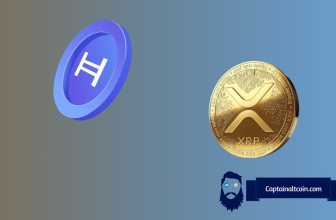Supply chain management-focused project VeChain has made many partnerships in the past with various projects looking to utilize the VeChainThor blockchain technology and upgrade their business practices.
One of those partnerships was with the global quality assurance and risk management company DNV GL, which used the VeChainThor platform to develop My Story, a solution that tracks and details information about wine bottles. It was reported today that this platform will be experiencing its first real signs of adoption as three Italian wineries integrated the My Story technology with their products.
The report came via a short twitter video posted on the official DNV GL account. My Story will give consumers insight into the contents of each wine bottle purchased from one of these wine makers. Details about grape type, cultivation, bottling, best ways of consuming, information about the winery owner and more are all collected by the My Story solution. Data is gathered throughout the entire product creation cycle, stored on the VeChainThor blockchain and can be accessed by simply scanning a QR code on the product label.
“My Story illuminates products and their supply chain for the benefit of consumers, who will have instant and in-depth access to key products characteristics such as quality, authenticity, origin, ingredients, water and energy consumption and more, all verified by DNV GL along the entire transformation process,” said Luca Crisciotti, CEO of DNV GL.
Speculation is rife that three of the following four Italian wine producers (Michele Chiarlo, Ricci Curbastro, Ruffino and Torrevento) are the ones who have implemented this technology into their products.
The community reaction was split, as it’s always the case with VeChain. Redditor VladimirorPoutine said:
“This is what REAL adoption looks like, if anyone was looking for a reference of some kind. It’s not walmart selling chocolate Bitcoins, or your local convenience store accepting LTC. It’s industry leaders using solutions that actually benefit them, their clients, and their consumers.”
On the other hand, u/Urc0mp isn’t as optimistic about the whole ordeal:
“Great to see some adoption out in the wild, but the critical thinker in me still doesn’t understand the value of the blockchain here. Data is immutable, but there is absolutely still the garbage in – garbage out problem here. I honestly don’t have any more trust in this data coming off the blockchain than I would if it were coming off of a centralized server.”
Looking for fast and secure way to buy crypto? Our Cex.io review might help you with that.
You can follow the discussion on this story here.
Does blockchain really solve the major point of weakness of supply management?
Blockchain technology is great for a transparent, immutable digital record of all transactions in a supply chain in the stream of goods from source to consumer. What blockchain unfortunately cannot do, is resolve the initial, principal weak link of a supply chain — the on-ramping of goods onto the chain.
As bitsonline.com illustrates, if a diamond mining company in West Africa placed an inexpensive crystal onto a traditional supply chain and labeled it a six-carat diamond, it might be unlikely to fool a jeweler. If that supply chain sat on an immutable distributed ledger, however, once on-chain the human-intensive processes of manually checking the validity of products and ensuring compliance might be more likely to be overlooked.
How safe is Binance and how to trade on it?
The blockchain makes those checks unnecessary, which is part of what makes it so efficient. The crystal flows along the chain unmonitored because it is digitally recorded as a six-carat diamond. The on-ramping problem — the weakest link in any supply chain — is not resolved by blockchain technology. If anything, on-ramping fraud is protected by blockchain tech’s reputation for ensuring integrity and transparency.
In summary, blockchain is excellent to providing transparency and establishing trust along the supply chain, but it can do nothing when it comes to the primary on-ramp of a good or service on the chain. That part is yet to be resolved even though blockchain can actually aid in this instance as well. Should a company try to defraud its customers like in our example above, blockchain can be used to undoubtedly establish who stands behind the fraud. So blockchain eliminates shelters for scammers to hide and increases accountability of goods/service providers. Once identified, a fraud can be handled by other technologies or social instruments, like legal actions.







